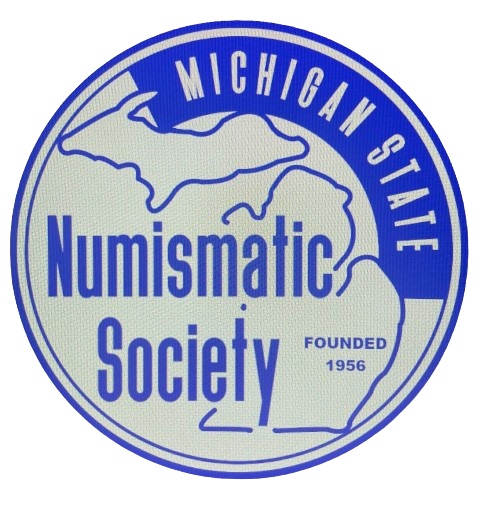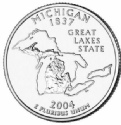


The Michigan State Numismatic Society







PIONEER WOMAN CAPITALIST
by Michael E. Marotta
PIONEER WOMAN CAPITALIST
by Michael E. Marotta
Mary Reibey's portrait graces the $20 note of the Reserve Bank of Australia. She was one of Australia's leading entrepreneurs. Yet, the facts about her life are few and some of them are in dispute. Whatever else she was, she was a private person whose deeds spoke for her.
She was born Molly Haydock, May 12, 1777 in Bury, Lancashire, England. After her parents died, her grandmother raised her and sent her to be a house servant. However, she ran away from her employer and -- dressed as a boy -- was arrested for stealing a horse. She called herself "James Barrow," but the trial revealed her true identity. That was August 1791 when she was 14. Her punishment was transportation to Australia. Carried on the Royal Admiral, she landed in October 1792 in New South Wales. Some of her early letters have been archived and her first letter from Australia shows a strong hand. However, her spelling and grammar are both colloquial and arbitrary. She also seems unclear about the terms of her punishment, which is surprising -- and she let herself be cheated out of two guineas. None of that predicted the woman she would become.
On October 17, 1792, she wrote from Botany Bay: "... the tell me I am for life wich The Governor teld me I was but for 7 years wich Grives me very much to think of it but I will watch every oppertunity to get away in too or 3 years But I will make my self as happy as I Can In my Pressent and unhappy situation ... Mr Scot Took 2 Ginnues of me and said he would get me My Libberty ..." She signed the letter "Mary Haydock." The spellings (the for they; grives for grieves) might let us hear how she sounded to herself.
Taken to Sydney, she was assigned as a nursemaid to the household of Major Francis Grose. A founder of Sydney, Maj. Grose had served his king fighting the American revolutionaries. Maj. Grose's 500 marines were supposed to be the garrison for the penal colony. However, they came to be called The Rum Corps. How you judge the major and his men depends on how democratic, egalitarian or opportunistic you are. Certainly, Grose showed some wry insight in making a nursemaid of the girl who had disguised herself as a boy.
Mary Haydock was married to Thomas Raby on September 7, 1794. Thomas Raby was a junior officer on the East India Company's store ship Britannia. (He spelled his name Raiby, Reiby and Reibey. The family settled on the last spelling. Also, there is a parallel claim that Raby had been an officer on the Royal Admiral and met Mary at that time.) Among other endeavors, Raby was brokering grain. In 1794, he acquired a grant of land on the Hawkesbury River. There, within the steep valleys and dense forests, the Rabys established a farm.
His enterprise extended to coal, furs and skins and by 1803 Thomas owned three boats. Also, in 1803, Thomas Reiby advertised cedar beams for sale in the Sydney Gazette. He traded his goods along the Hawkesbury and Hunter rivers, bringing raw materials and produce to Sydney. Mary operated a bakery. In 1804, prosperous, the family moved to Sydney. In 1805 Thomas Reibey built an impressive new home: two stories, 50 feet long, 30 feet high, and with two granaries in back. They called it "Entally House" after a suburb in Calcutta. They leased out the old home. Thomas bought several more farms along the Hawkesbury River. He created a partnership with Edward Wills and together they ordered the 53-ton schooner, Mercury, built in Sydney over 1805-06. In 1807, Reiby's enterprises moved farther from home, out to the Pacific islands and, by 1809, all the way to China and India. In addition, in 1809, he received an appointment as a harbor pilot. Late in 1809, he set sail for India. There, he fell victim to sunstroke, from which he never fully recovered, dying in Sydney on April 5, 1811. Mary took over the business.
Obviously, she had been running things in his absences over the last 15 years. Still, she had seven children to care for and a sprawling business establishment to manage. She owned farms, the family sealing operation at Bass Strait, and, of course, the overseas commerce. Mary opened a new warehouse in George Street in 1812, and extended her fleet with the purchase of two more ships in 1817. Also in 1817, she was a founding member of the Bank of New South Wales (called "Westpac" since 1982).
Maj. Francis Grose's star set with the Rum Rebellion of 1808. In 1810, a new governor brought a new regiment. Fortunately, perhaps, governor William Bligh fell ill. His lieutenant governor, Lachlan Macquarie stepped in. Macquarie was a man of foresight and broad vision. He established a program of town planning and building that created a firm infrastructure. He encouraged the exploration that already had reached deep into the inland. When Mary returned from taking her daughters to England in 1820, she launched several new buildings in Sydney. Not surprisingly, Mary Reibey was welcomed into the governor's social circle. Mary's appointment as a governor of the Free Grammar School in 1825 was typical of her new concerns.
At age 50, she began to withdraw from direct management of the business. She focused on social issues in emancipist communities. (The "emancipists" were those convicts who had served out their sentences. The term also refers to their children, spouses, and other legally free people. They were distinct from other colonists, "exclusives." Emancipists outnumbered exclusives through most of the early history of Sydney and New South Wales.) Her last home was at Newtown, Sydney and she died there on May 30, 1855, shortly after marking her 78th year. She outlived all but two of her children. Her eldest son, Thomas, established himself in New Zealand.

Portrait of Mary Reiby (also spelled Reibey and Raby) on the Reserve Bank of Australia $20 bill. Dominant colors are red and black $20 bill also shows the Schooner Mercury. Originally part-owned by Thomas Reibey, but later owned by Mary Reibey, the schooner Mercury was built in Sydney in 1805/6. Based on an illustration prepared by Karl Marquardt, which was commissioned by the Reserve Bank in 1993. Building George Street (Sydney) building, which was owned by Mary Reibey and comprised four shops and dwellings. Based on an illustration in Joseph Fowles' book entitled Sydney in 1848. Held by the State Library of New South Wales.
(Reserve Bank of Australia) Image from author's collection.
Sources and Resources
http://en.wikipedia.org/wiki/Mary_Reibey
NSW Registry of Births, Deaths, and Marriages
(Extract from 1996 Metropolitan East Disadvantaged School Program)
Irvine, N, Mary Reiby: Molly Incognito, Library of Australian History, 1982.
Australian Dictionary of Biography, Vol. 2, Melbourne University Press, 1968.
200 Australian Women, Women's Redress Press, 1988.
The Making of Australia - Prison Port and Market Town, (Sydney, 1982).)
Dear cousin: the Reibey letters: 22 letters of Mary Reibey, her children and their descendants 1792-1901. Hale & Irenmonger, 1995. The Genealogical Society of Victoria Inc. Melbourne Victoria, 3000 Australia; email: gsv@gsv.org.au
| Board Committees |
| Board Minutes |
| Board Agendas |
| 2021 Spring Activites |
| 2021 Spring Exhibit Sponsors |
| 2021 Spring Pictures |
| 2021 Spring Dealers |
| 2020 Fall Activities |
| 2020 Fall Exhibit Sponsors |
| 2020 Fall Pictures |
| 2020 Fall Dealers |
| 2020 Spring Activities |
| 2020 Spring Exhibit Sponsors |
| 2020 Spring Pictures |
| 2020 Spring Dealers |
| 2019 Fall Activities |
| 2019 Fall Exhibit Sponsors |
| 2019 Fall Convention Dealers |
| 2019 Fall Pictures |
| 2019 Spring Activities |
| 2019 Spring Exhibit Sponsors |
| 2019 Spring Convention Dealers |
| 2019 Spring Convention Photos |
| 2018 Fall Activities |
| 2018 Fall Exhibit Sponsors |
| 2018 Fall Convention Dealers |
| 2018 Fall Convention Photos |
| 2018 Spring Activities |
| 2018 Spring Exhibit Sponsors |
| 2018 Spring Convention Dealers |
| 2018 Spring Convention Photos |
| 2017 Fall Activities |
| 2017 Fall Exhibit Sponsors |
| 2017 Fall Convention Dealers |
| 2017 Fall Convention Photos |
| 2017 Spring Activities |
| 2017 Spring Exhibit Sponsors |
| 2017 Spring Photos |
| 2017 Spring Convention Dealers |
| 2016 Fall Activities |
| 2016 Fall Pictures |
| 2016 Fall Exhibit Sponsors |
| 2016 Spring Activities |
| 2016 Spring Exhibit Sponsors |
| 2016 Spring Pictures |
| 2015 Fall Activities |
| 2015 Fall Exhibit Sponsors |
| 2015 Fall Pictures |
| 2015 Spring Activities |
| 2015 Spring Pictures |
| 2015 Spring Exhibit Sponsors |
| 2014 Fall Pictures |
| 2014 Fall Exhibit Sponsors |
| 2014 Fall Dealers Attending |
| 2014 Fall Exhibit Winners |
| 2014 Fall Activities |
| 2014 Spring Pictures |
| 2014 Spring Exhibit Winners |
| 2014 Spring Activities |
| 2013 Fall Exhibit Winners |
| Video Rentals |
| Ship and Insure |
| Mayhew Business College Scrip Notes |
| Good For Trade Tokens |
| Tokens of Albion |
| Gale Manufacturing |
| Duck Lake Token Issued By Boat House |
| Albion College |
| New Ira Mayhew College Scrip |
| It Runs in the Family |
| Numis-stability |
| The First “Lincoln Cents” |
| Walking with Liberty |
| Michigan Roll Finds |
| Utica Banknotes |
| Lincolnmania |
| Searching for Rarity and History |
| Numismatics of the 1950's |
| Coining in London and Stuttgart |
| Coining in Paris |
| Coining in Sweden |
| Coining in Japan |
| Coining in Korea |